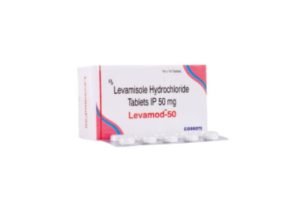
Here’s a detailed review of Bacampicillin, a penicillin-class antibiotic:
Description:
Bacampicillin is an oral prodrug of ampicillin, a broad-spectrum penicillin antibiotic. After absorption, Bacampicillin is converted into ampicillin in the body. Ampicillin works by inhibiting bacterial cell wall synthesis, leading to the destruction of susceptible bacteria.
Brand Names:
- Spectrobid
- Penglobe
- Bacamp
- Pacilin
- Penbactam
Available Forms & Strengths:
- Tablets: 400 mg, 800 mg
- Oral Suspension: Usually available in 250 mg/5 mL strength
Uses:
Bacampicillin is used to treat various bacterial infections, including:
- Respiratory Tract Infections: Bronchitis, pneumonia
- Urinary Tract Infections (UTIs)
- Ear, Nose, and Throat Infections: Otitis media, sinusitis, and pharyngitis
- Gastrointestinal Infections: Salmonella, Shigella infections
- Skin and Soft Tissue Infections
- Uncomplicated Gonorrhea
Side Effects:
Common side effects include:
- Gastrointestinal: Nausea, vomiting, diarrhea, and abdominal pain.
- Allergic Reactions: Rash, itching, urticaria (hives), and anaphylaxis (in rare cases).
- Liver Function: Mild and transient increases in liver enzymes (rare).
- Hematological: Eosinophilia, leukopenia, and thrombocytopenia may occur but are uncommon.
- Superinfections: Long-term use may lead to fungal infections or bacterial overgrowth, including Clostridium difficile-associated diarrhea (CDAD).
Dose:
- Adults: The usual dose is 400 mg to 800 mg twice daily, depending on the type and severity of infection.
- Children: Doses are based on weight, and the pediatric suspension is often used.
- Duration: Treatment typically lasts 7 to 10 days, but may vary depending on the infection type.
Contraindications:
- Hypersensitivity to Bacampicillin, Ampicillin, or any penicillin antibiotics.
- Patients with a history of severe allergic reactions to beta-lactam antibiotics (e.g., cephalosporins, carbapenems) should use Bacampicillin cautiously, as cross-reactivity may occur.
Drug Interactions:
- Allopurinol: Co-administration may increase the risk of developing a rash.
- Oral Contraceptives: Bacampicillin may reduce the effectiveness of oral contraceptives, increasing the risk of pregnancy. Consider using additional contraceptive methods.
- Methotrexate: Bacampicillin may reduce the clearance of methotrexate, increasing the risk of toxicity.
- Probenecid: May increase the concentration of Bacampicillin in the blood by reducing renal excretion.
Warnings:
- Allergic Reactions: As with all penicillin-class drugs, severe allergic reactions can occur, including anaphylaxis, which is life-threatening. Patients should discontinue the drug and seek immediate medical attention if signs of an allergic reaction occur.
- Renal Impairment: In patients with compromised kidney function, dose adjustments may be necessary to prevent drug accumulation and toxicity.
- Clostridium difficile-associated diarrhea (CDAD): Prolonged or severe diarrhea could indicate this condition. Contact a healthcare provider if this occurs.
Special Considerations:
- Pregnancy: Bacampicillin is classified as Category B. There are no well-controlled studies in pregnant women, so it should be used only when clearly needed.
- Breastfeeding: Bacampicillin is excreted in small amounts in breast milk. While considered generally safe, breastfeeding mothers should monitor infants for any signs of allergic reactions or gastrointestinal disturbances.
- Pediatric Use: Bacampicillin suspension is often used for children, with the dose adjusted based on body weight.
Doctor Advised:
Always follow your doctor’s prescription regarding dosage and treatment duration. Inform your healthcare provider of any history of allergies, particularly to antibiotics. Complete the entire course of the antibiotic, even if symptoms improve, to prevent resistance. If you experience severe side effects, such as persistent diarrhea or rash, seek medical advice.
Conclusion:
Bacampicillin is an effective antibiotic for treating a wide variety of bacterial infections, especially those of the respiratory and urinary tracts. It offers an advantage over traditional ampicillin by being more easily absorbed in the gastrointestinal tract. However, like other antibiotics, it must be used cautiously in patients with a history of allergies or kidney problems, and side effects should be closely monitored.







